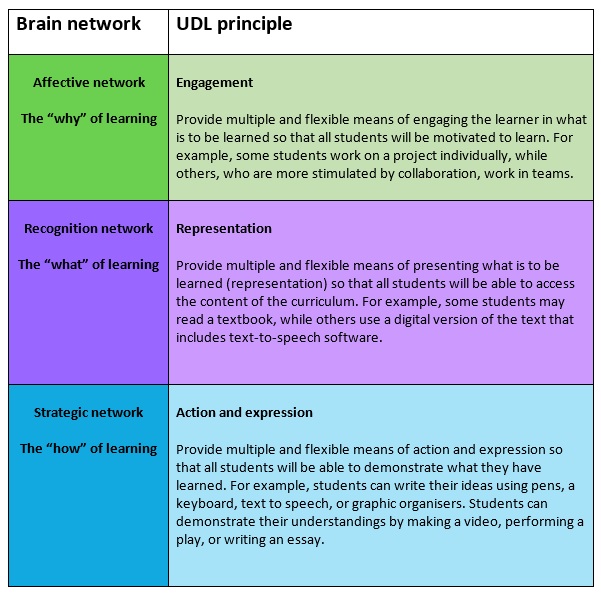Every classroom in every school hosts a myriad of students with diverse and variable needs, strengths, interests, and experiences. Universal Design for Learning, or UDL, is an approach to teaching that helps teachers plan and deliver programmes with all students in mind from the outset.
This blog post is the first of a three part series on UDL. In this blog you can find out about the origins and principles of UDL and learn how UDL supports the implementation of The New Zealand Curriculum.
Things you should know about UDL
- UDL is a teaching and learning framework built on the premise that students learn in diverse ways and a "one-size-fits-all" teaching programme cannot cater for these differences.
- UDL helps educators identify barriers to learning and create flexible learning environments.
- UDL is influenced by a wide base of research in how the brain works and how students learn.
- UDL acknowledges that some student variability is systematic and can be predicted, and planned for, in advance.
The biggest thing for me is that the way we do things – our teaching methods, resources, experiences – are often full of hidden barriers that scupper children's learning. The UDL framework both helps us reflect on practice and shine a light on what could get in the way for learners. Plus it gives us strategies for creating more flexible environments with built in options and supports. The nutshell is that UDL helps us deliver an equitable inclusive curriculum.
Chrissie Butler, learning facilitator
UDL principles
Designers of UDL recognise that there are three dimensions of student variability that exist in every learning environment at every age. These dimensions are linked to the three main networks in the human brain. They are differences in how students:
- engage with materials – the affective brain network
- perceive and comprehend information – the recognition brain network
- act upon materials and show what they know – the strategic brain network.
Three UDL principles, along with suggested teacher actions, have been designed in relation to these three dimensions of student variability:
If you cannot view or read this diagram, select this link to open a text version.
Acknowledgement: The content in the table is derived from the Universal Design for Learning series
Return to top
UDL and The New Zealand Curriculum
UDL and the NZC
This short video explains UDL and how it helps us realise the vision of The New Zealand Curriculum.
UDL is not a separate or additional teaching programme. Rather, it is an approach or framework to teaching that helps you implement The New Zealand Curriculum in an equitable and inclusive way.
The inclusion principle and the NZC values of diversity, equity, and respect can be expressed and brought to life as teachers use UDL in the classroom and in the wider school environment.
Several teaching approaches that are promoted as evidence of effective pedagogy in The New Zealand Curriculum, are key elements of UDL. For example, the NZC recommends that students encounter new learning a number of times and in a variety of different tasks or contexts. This aligns perfectly with the UDL principle of providing students with multiple means of representation. The NZC also suggests that teachers look for opportunities to involve students directly in decisions relating to their own learning. This corresponds with the UDL principle of providing students with multiple means of action and expression.
The cartoon below is often used to illustrate the philosophy of inclusion and UDL. By recognising diversity, removing barriers to learning, and providing supports to all learners we can help everybody access the curriculum and experience success. We can make the curriculum work for everyone.
Source of image: Michael F Giangreco
Want to learn more?
Inclusive Education Guides for Schools – Universal Design for Learning
This comprehensive education guide provides practical strategies, suggestions, and resources to help you learn more about UDL and plan for all learners at the outset.
Other blogs in the series
Universal Design for Learning in action
This blog features the stories of two teachers who use UDL. These teachers share their understandings and application of UDL, and offer a smorgasbord of inclusive ideas and strategies for you to take away and trial in your own classrooms.
My journey with Universal Design for Learning
In this blog primary school teacher Adele O'Leary shares her first steps in UDL, describing the impact on her teaching and her learners.





